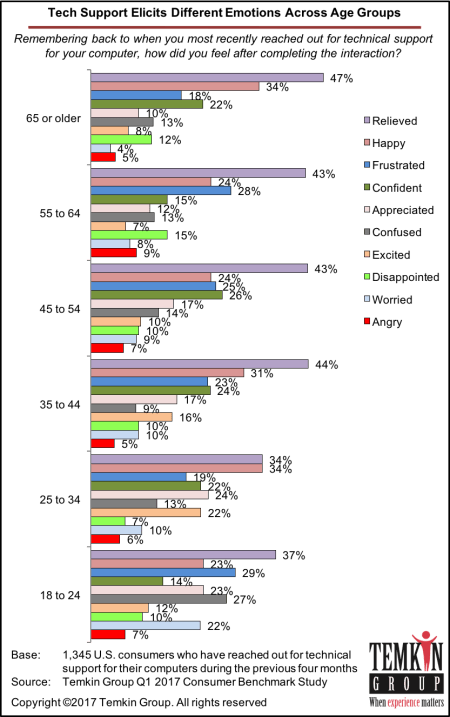In a recent post, Temkin Group analyzed 10 emotions that consumers feel after completing a number of different interactions. We decided to dig deeper into one of those interactions, getting tech support for a computer. We analyzed the emotional responses across different ages of consumers after that interaction and found that:
- All ages of consumers are most likely to feel relieved
- The next most frequent emotions are happy and frustrated
As you can see in the chart below:
- 18- to 24-year-olds: While relieved is the most common emotion (37%), this group is more likely to feel frustrated, confused and worried than any other age group.
- 25- to 34-year-olds: After relieved and happy (34%), this group is most likely to feel more appreciated than any other age group.
- 35- to 44-year-olds: After relieved (44%), this group is most likely to feel happy. It is also the age group that is most likely to feel excited.
- 45- to 54-year-olds: After relieved (43%), this group is most likely to feel confident, a feeling that it has more than any other age group.
- 55- to 64-year-olds: After relieved (43%), this group is most likely to feel frustrated and happy.
- 65-years-old or older: After feeling more relieved than any other age group (47%), this group is most likely to feel happy.

Why is this important? Our research shows that emotion is the largest driver of customer loyalty. So companies must not only start talking about emotion, but they also need to develop unique approaches for dealing with different emotions across their customer segments.
The bottom line: It’s time to make customer emotion a top priority.
This blog post was originally published by Temkin Group prior to its acquisition by Qualtrics in October 2018.





